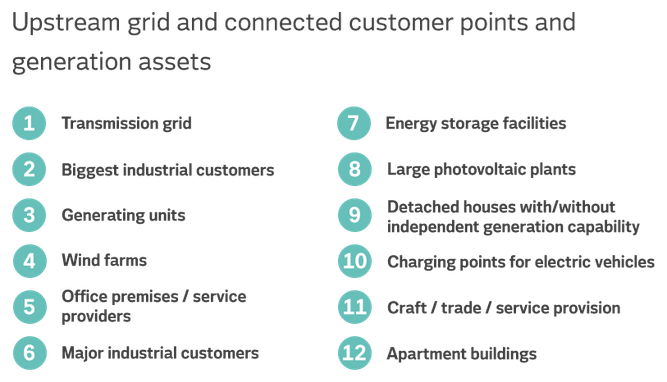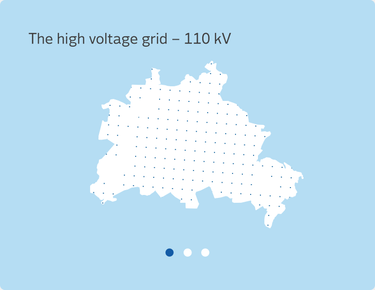Berlin's electricity grid
Berlin's distribution grid consists of sub-grids at high voltage (110 kV), medium voltage (10 kV) and low voltage (0.4 kV), and is linked to the upstream transmission grid via substations (380 kV).



We connect over 2.3 million Berlin households, as well as business and industrial customers, to the highest voltage grid and generation plants. This takes around 36,000 kilometres of cable across all voltage levels, ca. 88 substations and grid nodes and several thousand grid stations in Berlin.
Depending on the energy that they generate and your energy requirements, the generation and customer plants are connected at the best voltage level for you.
Incorporating renewable energy generation plants, charging points for electric vehicles and new parts of the city means that our distribution grid is continually expanding.
The distribution grid in the Berlin urban area



Berlin's urban area is supplied with energy via approx. 900 km of high voltage cable, 10,900 km of medium voltage cable and 23,900 km of low voltage cable. We use this to ensure that every part of Berlin has a secure energy supply. However, not every district has cables at all voltage levels.
Fit for the future
The change in energy supply places new demands on the electricity distribution network. Digitisation, electromobility, the increasing number of decentralised generation assets, as well as the volatile feed-in of energy and the growing quantity of data resulting from this require new technical systems.
That is why we will implement a new operations management concept by 2025. The technology is based primarily on the construction of a data platform which brings all information and data together, and which continuously monitors and controls the status of the grid. The operations management concept is an investment in the future of smart solutions for our customers.
We keep an eye on every voltage level
Stromnetz Berlin reliably operates Berlin's electricity distribution grid. Increased expansion of decentralized generation assets and the infrastructure for electric mobility in the low-voltage grid increases the demands on the electricity grid. These are taken into account within the framework of the operations management concept by the formation of a low-voltage grid control centre. With the installation of intelligent measuring systems, e.g. in secondary substations, condition data is sent via the low-voltage grid and evaluated in the future low-voltage grid control centre. Through this continuous analysis of the grid data, including in the low-voltage grid, bottlenecks and malfunctions can be detected early in all voltage levels and responded to quickly.
